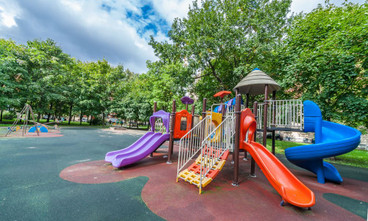Suitable playground surfacing will make the area safer for kids to play on and keep the ground from getting torn up. Luckily, rubber playground surfacing can do that and more.
Look no further when installing and maintaining the best material is essential. Here are the answers to five frequently asked questions (FAQs) about rubber playground surfacing.
What Are Its Benefits?
Playground surfacing provides an added layer of protection against falls for children and anyone else using the equipment. While loose materials, such as sand and woodchips, require constant replacement, harder materials, such as concrete, offer little to no impact resistance.
Rubber playground surfacing is an excellent alternative that provides adequate protection from falls and doesn’t need constant replacement.
2. How Long Does It Last?
The lifespan of your rubber playground surfacing primarily depends on the quality of the material and how well maintenance crews maintain it. However, with proper care, most installations will last over a decade. However, you should consider the quality of the surfacing and ensure it continues to offer maximum impact resistance.
Replacing the poured-in-place rubber surfacing is essential to avoid unnecessary accidents and injuries if you notice cracks, broken pieces, or damages beyond repair.
3. How Should I Maintain It?
While rubber surfacing can prematurely degrade if not cared for, learning a few best practices should assuage some of your fears. The simplest thing you can do is sweep and vacuum the surface to ensure it’s clear of mud, dirt, sand, and gravel.
Leaving clutter on your rubber surfacing will cause it to degrade and can pose a hazard to those using it. You can clean it with a hose if there’s too much buildup.
4. Is It Waterproof?
While rubber surfacing doesn’t immediately absorb water, it will eventually, so ensuring you clean up spills and standing water as soon as possible is a good idea. Over time, water will seep through tiny pores in the material, potentially limiting its lifespan.
In most cases, water will run off the surface along its slope. However, if your installation doesn’t have proper drainage, the water could collect in pools, causing unwanted damage.
5. How Can I Save Money on My Installation?
While pour-in-place rubber surfacing offers many advantages, it can also be expensive. One good way to save money is to use black rather than colored surfacing. Most people don’t realize that coloring is one of the most expensive aspects of the installation.
Caring for your rubber surfacing and ensuring you maintain it well will allow you to make the most of your investment and ensure everyone is safe while using the playground.
Find the Solution that Meets Your Needs
With so many options for playground surfacing, it can be challenging to decide. However, the benefits of rubber surfacing make it an excellent investment for most needs.
We hope our answers to your FAQs about rubber playground surfacing offered sufficient advice, so you can get the most out of your equipment. Don’t hesitate to contact our team if you have follow-up questions!

